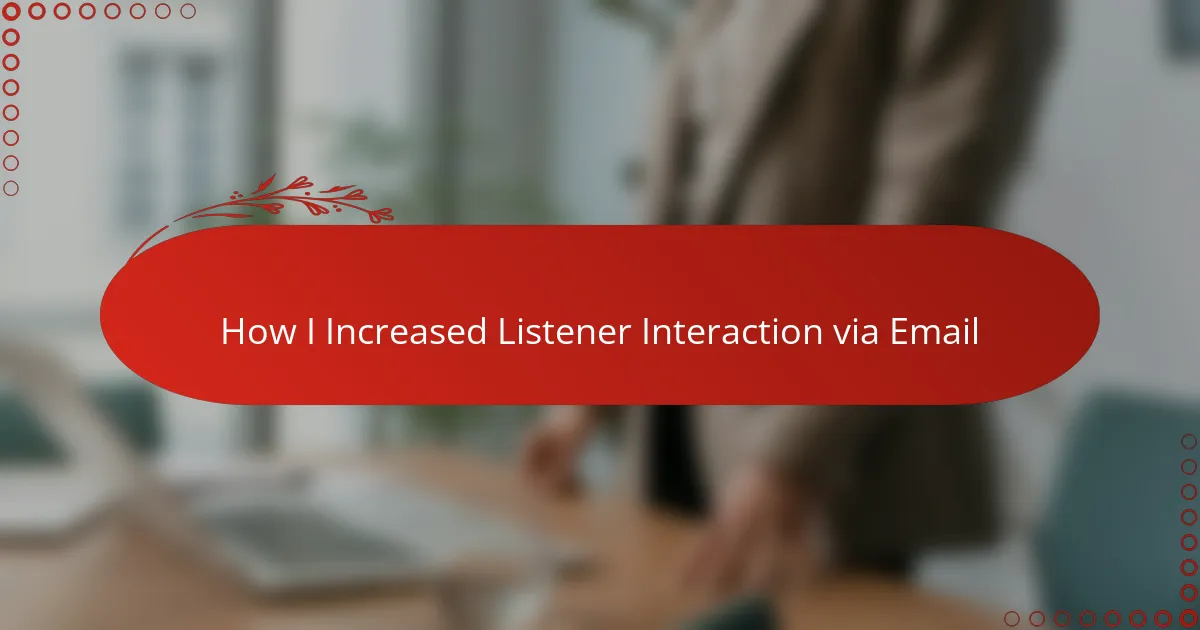Key takeaways
- Listener interaction in radio fosters a collaborative environment, enhancing engagement and authenticity.
- Personalized emails substantially improve audience connection and inspire more thoughtful responses.
- Effective call-to-action and timely communication significantly boost email responses and maintain listener interest.
- Measuring engagement goes beyond metrics, focusing on the quality of interactions and emotional feedback from listeners.
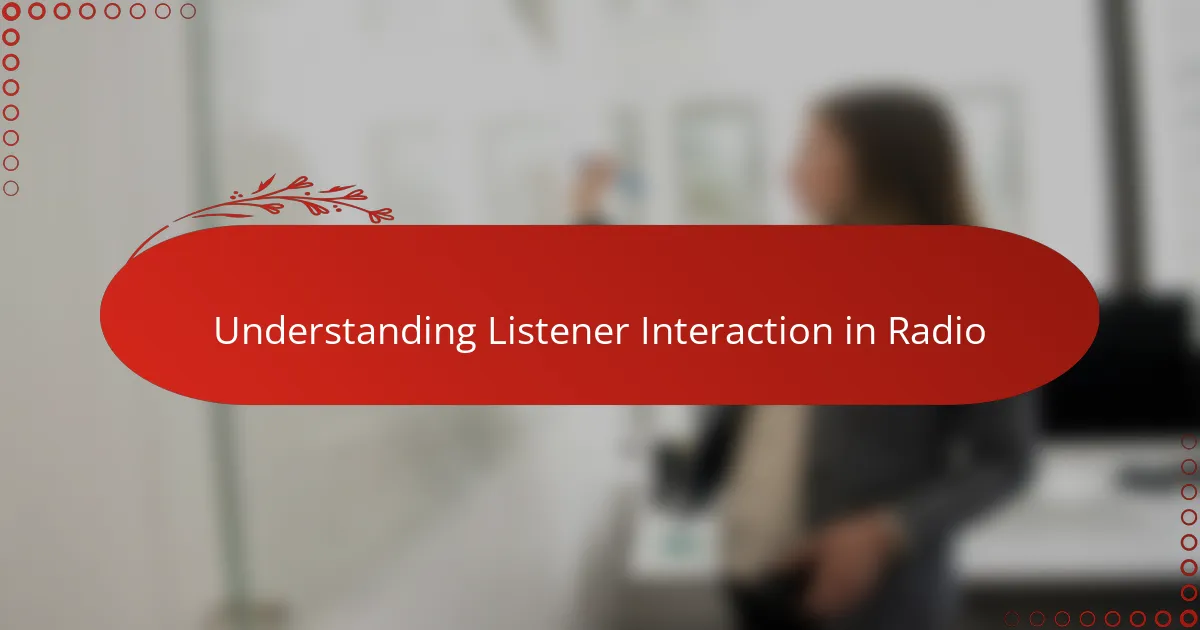
Understanding Listener Interaction in Radio
Listener interaction in radio isn’t just about hearing voices; it’s about creating a genuine connection. When I first started in broadcasting, I realized that every call, message, or email was more than just feedback—it was a clue to what truly resonated with my audience. Have you ever wondered why some shows feel so engaging? It’s because their interaction flows naturally, almost like a conversation between friends.
Understanding this interaction means recognizing that listeners want to be seen and heard, not just as an audience, but as participants. I found that when I treated their input as valuable, it changed the entire dynamic of my show. The energy shifted from one-sided to collaborative, making the broadcast much more lively and authentic.
What does this tell us about radio? That listener interaction is the heartbeat of a successful show. It’s not a one-way street but a dialogue that feeds creativity and relevance. I’ve learned that tuning into this relationship is just as important as tuning into the station itself.
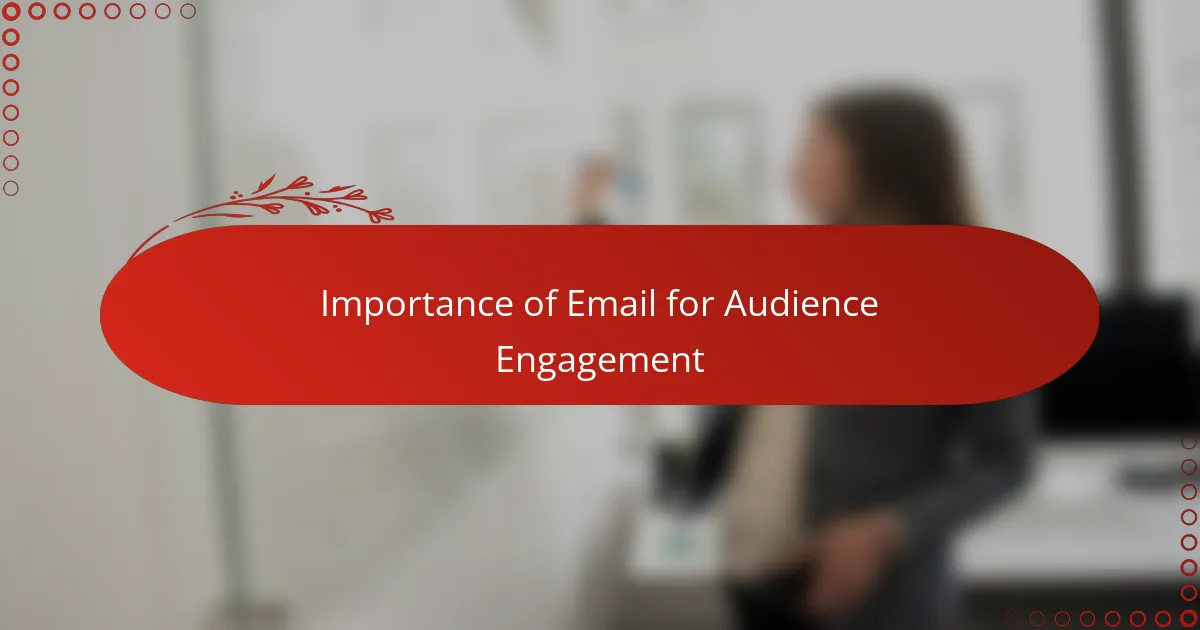
Importance of Email for Audience Engagement
Email quickly became my secret weapon for deepening audience engagement. Unlike fleeting calls or social media posts, emails offer a space for longer, more thoughtful conversations. Have you noticed how a well-crafted email can feel like a letter from a friend? That’s exactly the intimate connection I aimed to build with my listeners.
I remember the first time I received an email from a listener sharing a personal story related to a show topic. It hit me—this wasn’t just feedback; it was trust. Email allowed my audience to open up in ways that phone calls rarely did, giving me insights that transformed my programming in real time.
Isn’t it fascinating how something as simple as an inbox can create a two-way street for creativity? Through email, I could respond thoughtfully, ask follow-up questions, and even invite listeners to contribute to upcoming segments. This ongoing dialogue made my show feel like a community rather than a broadcast, and that’s the real magic of email for audience engagement.
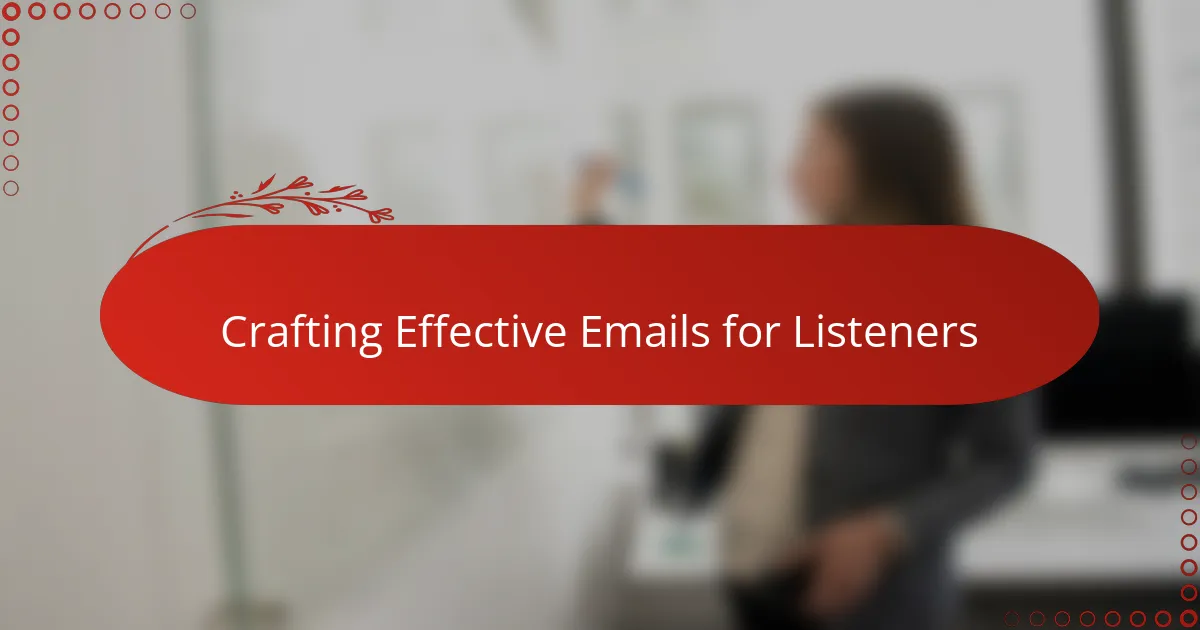
Crafting Effective Emails for Listeners
When I started crafting emails for my listeners, I quickly realized that the tone mattered more than the content alone. Writing like I was talking to a friend made my messages feel warmer and more inviting, which encouraged more people to hit reply. Have you ever received an email that just felt too formal or robotic? That’s the last thing you want when trying to build genuine interaction.
Personalizing emails was another game changer for me. Using listeners’ names and referencing their previous comments made each message feel like part of an ongoing conversation—not just a generic newsletter. I found that this simple step increased responses dramatically, turning passive listeners into active participants.
One trick I learned was to keep emails concise but packed with value. I’d often ask a direct question or invite opinions, which gave listeners an easy way to jump into the discussion. Why leave them guessing what to say next when a clear invitation can spark a meaningful reply? This approach transformed my inbox into a lively hub of listener stories and feedback.
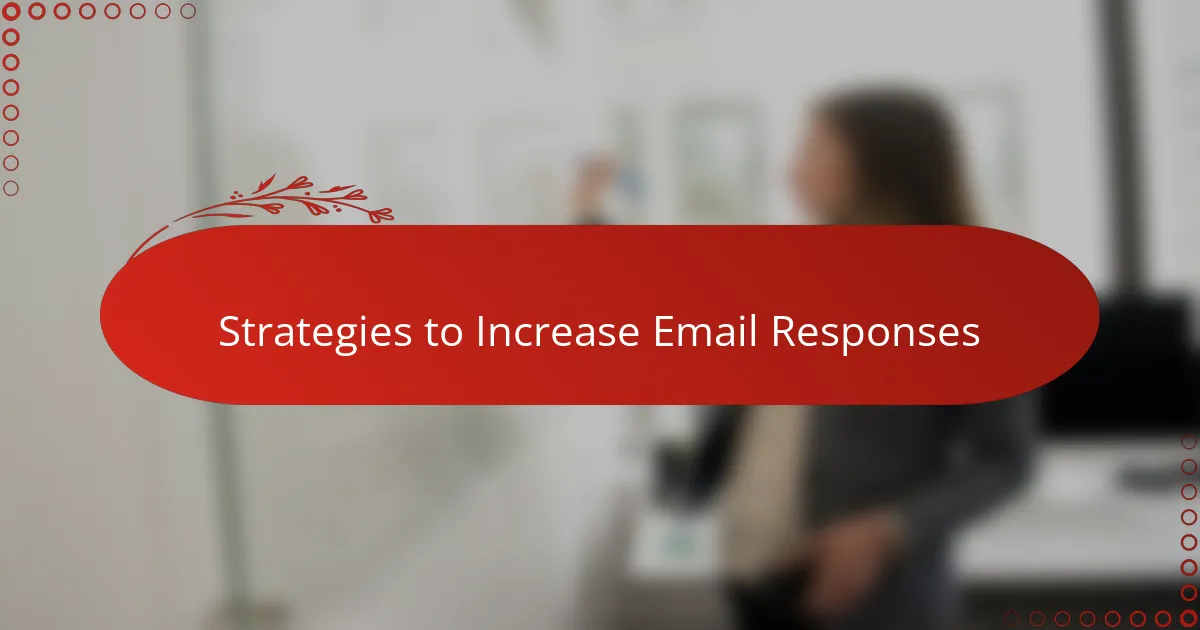
Strategies to Increase Email Responses
One of the strategies that truly boosted my email responses was making the call-to-action impossible to ignore. Instead of vague requests, I started asking specific questions that piqued curiosity or invited opinions. Have you ever found yourself more tempted to reply when asked something clear and direct? That’s exactly the effect I aimed for, and it worked wonders in sparking genuine dialogue.
Another approach I swear by is timing. Sending emails right after a show, when the topic is fresh in listeners’ minds, drastically increased engagement. I learned that catching that moment made my messages feel relevant and urgent—almost like continuing a conversation rather than starting a new one. It created a flow that encouraged quick, thoughtful replies.
Lastly, I embraced the power of follow-up without being pushy. When I received a response, I replied promptly and thoughtfully, which showed listeners their voices mattered beyond a single message. This simple habit built trust and often led to ongoing exchanges that enriched my understanding of my audience. Isn’t it amazing how showing you care can turn a simple email into a meaningful connection?
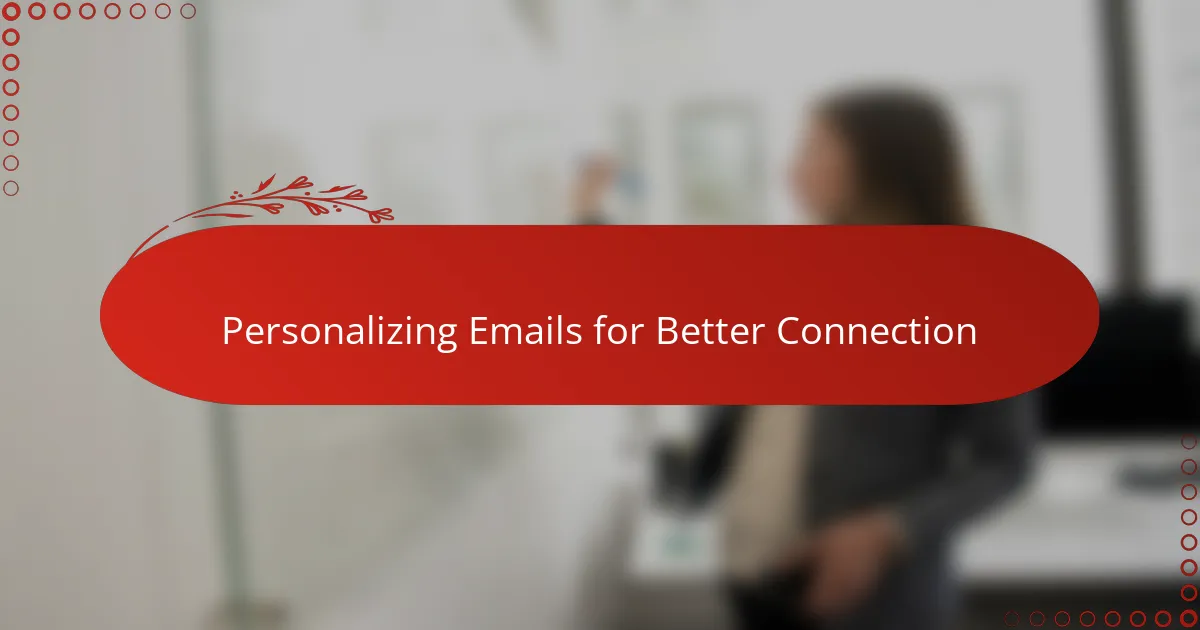
Personalizing Emails for Better Connection
I quickly learned that personalizing emails isn’t just about inserting a name—it’s about acknowledging the unique stories behind each listener. When I referenced a listener’s previous comment or their favorite segment, their replies felt less like routine emails and more like genuine conversations. Have you ever noticed how hearing your name in a message makes you pause and feel recognized? That simple recognition deepened my listeners’ connection to the show immensely.
It’s surprising how a small gesture like tailoring content to individual interests can make a world of difference. I once received an enthusiastic email back from a listener who appreciated that I remembered their favorite song request from weeks before. It reaffirmed that my attention to detail wasn’t going unnoticed, creating a warm, ongoing rapport that encouraged others to share more openly as well. This personalized thread became a two-way bridge rather than a one-sided broadcast.
I also found that personalization invited authenticity. When emails felt like they were crafted specifically for one person, I saw more heartfelt stories and honest feedback in return. So I always asked myself, am I writing this for a crowd or for one person? Shifting that mindset transformed my email exchanges into meaningful connections that went beyond the airwaves.
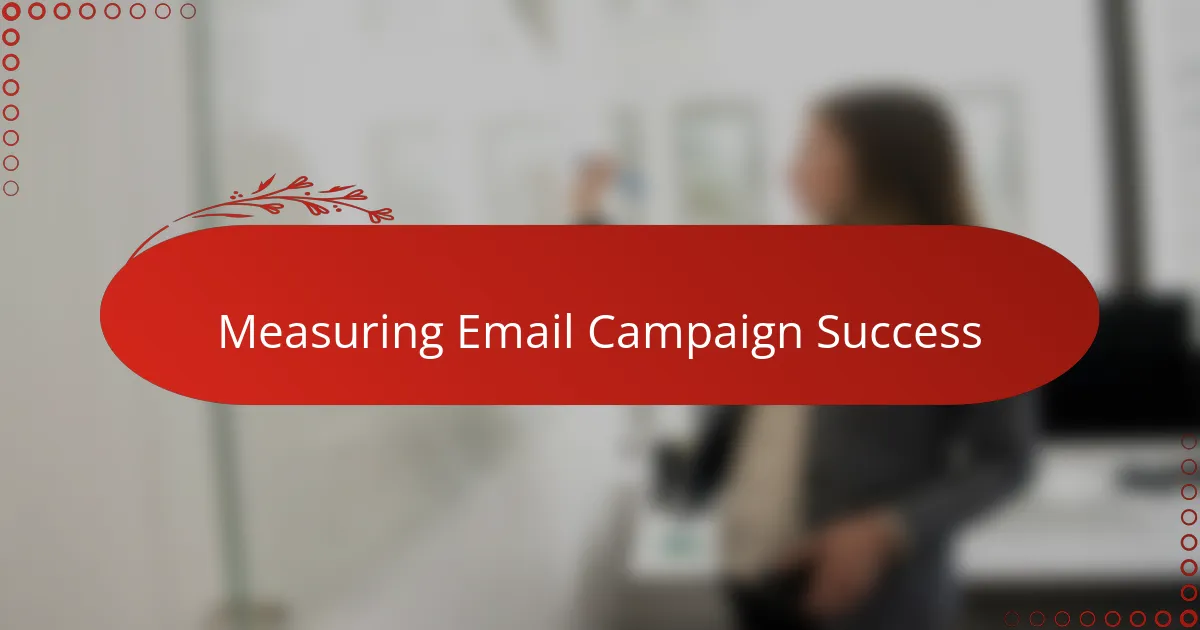
Measuring Email Campaign Success
Measuring the success of my email campaigns wasn’t just about tracking numbers; it was about understanding the quality of the conversations sparked. I started paying close attention to open rates and click-through rates, but what truly mattered to me was how many listeners replied with thoughtful messages. After all, an email opened without a response felt like a missed opportunity to deepen connection.
Have you ever wondered which metrics really indicate engagement? I found that response rate became my favorite indicator—it showed not just passive interest but active participation. When I saw a spike in replies after tweaking my subject lines or timing emails to hit inboxes right after the show, I knew I was on the right track.
Beyond numbers, I kept an eye on the tone of listener replies. Were they enthusiastic, reflective, or casual? This emotional feedback helped me fine-tune the way I framed questions and topics in my emails. Measuring success became less about rigid data and more about the evolving relationship with my audience—and that shift made all the difference.
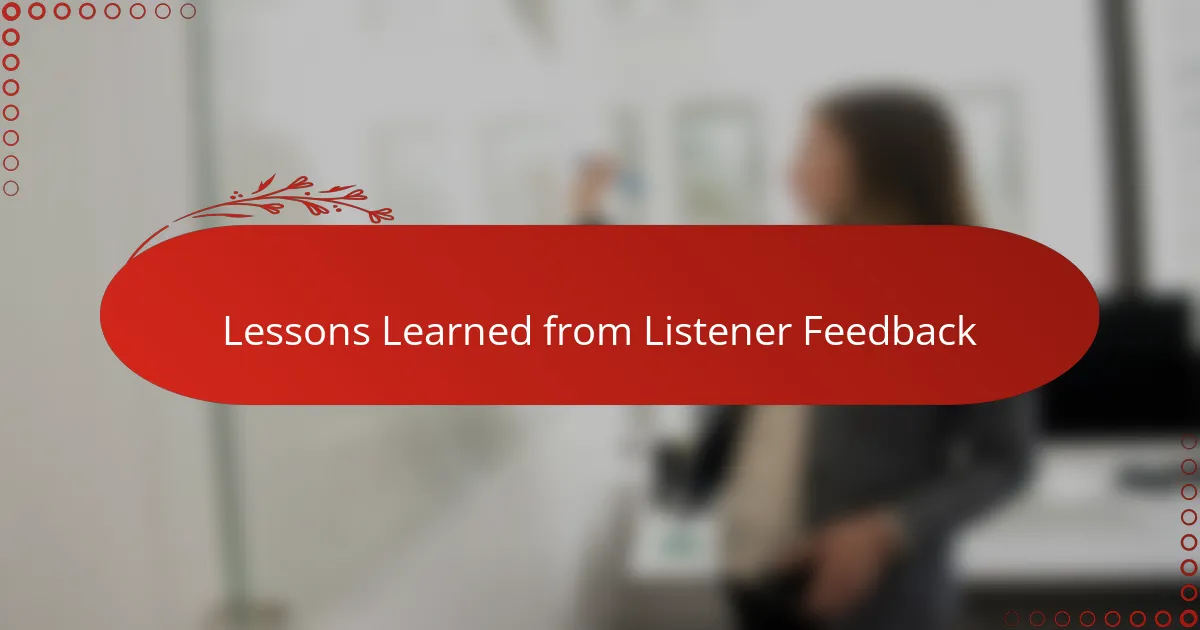
Lessons Learned from Listener Feedback
Listener feedback taught me that behind every email is a real person with genuine feelings and thoughts. One time, a listener’s heartfelt message reshaped how I approached a segment—reminding me that their perspective can uncover blind spots I never noticed. Have you ever experienced a moment when a single comment changed your entire outlook? That’s the power of truly listening.
I learned that not all feedback is straightforward praise or criticism; sometimes it’s layered with emotion or hinting at something deeper. By reading between the lines, I could better tailor my content and tone to meet my audience’s needs. It’s like having a conversation where you sense what’s unsaid but deeply felt.
Finally, I realized that sharing back what I learned from their feedback closes the loop and builds trust. Whenever I mentioned a listener’s idea on air or responded personally, it sparked even more dialogue. Isn’t it amazing how acknowledging someone’s voice makes them want to speak up again? That ongoing exchange became the heartbeat of my show’s growth.
